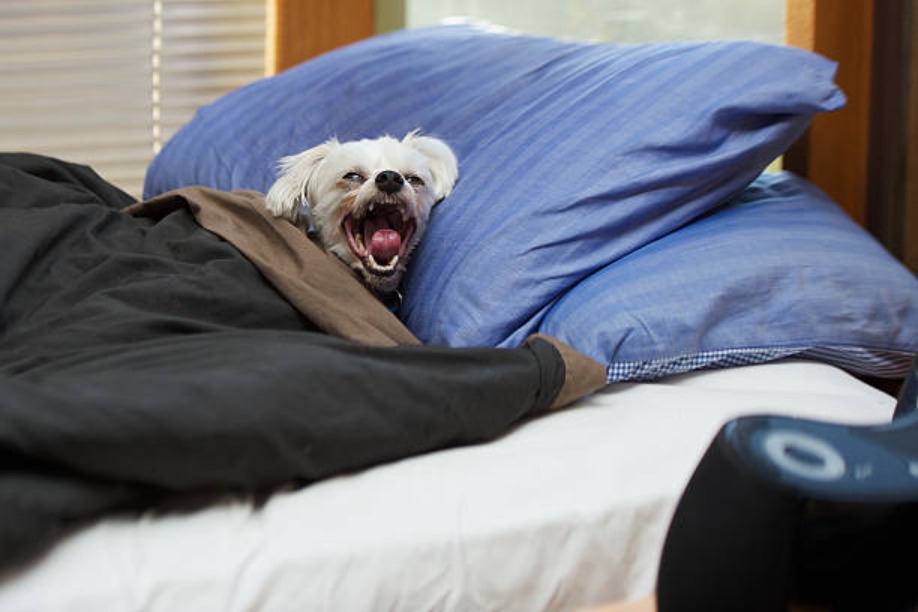For many dog owners, one of the most frustrating challenges is dealing with a bed that doesn’t last. Dogs, especially puppies, strong chewers, or high-energy breeds, can quickly destroy a standard dog bed, leaving stuffing everywhere and creating a potential hazard if ingested. This is why a chew resistant dog bed is such a valuable investment. Designed with durability, comfort, and safety in mind, these beds allow your dog to rest peacefully without you worrying about constant replacements.
A chew resistant dog bed isn’t just about toughness—it’s about providing your dog with a supportive, cozy, and safe environment. By choosing the right bed, you give your dog a space to sleep, relax, and recover from daily activity, all while protecting your floors, furniture, and wallet from repeated damage.
What is a Chew Resistant Dog Bed?
A chew resistant dog bed is specifically designed to withstand chewing, digging, and scratching behaviors that many dogs naturally display. Unlike traditional beds, which often use soft fabrics and loose stuffing, chew resistant beds are made from heavy-duty materials such as ballistic nylon, reinforced canvas, or tough synthetic fibers. Some designs even feature metal or PVC frames to resist tearing completely.
These beds are not only durable but also comfortable. Many include orthopedic foam or memory foam inserts that support joints and bones, making them ideal for large breeds, senior dogs, or pets with joint issues. The combination of toughness and comfort ensures that your dog gets the rest they need without risking damage to the bed or their safety.
Why Dogs Chew Their Beds
Understanding your dog’s chewing behavior is key to choosing the right bed. Dogs chew for several reasons:
- Teething Puppies – Puppies chew to relieve discomfort as their adult teeth come in.
- Boredom – Dogs left without enough mental or physical stimulation often turn to chewing.
- Anxiety and Stress – Chewing can be a coping mechanism for dogs who experience separation anxiety or fear.
- Instinctual Behavior – Some breeds have a natural tendency to chew or dig due to their hunting or working instincts.
A chew resistant dog bed can help address this problem by removing easy targets for destructive behavior, while still offering a comfortable and safe place to rest.
Benefits of a Chew Resistant Dog Bed
1. Durability That Lasts
The most obvious advantage of a chew resistant dog bed is its durability. Strong dogs can destroy a regular bed in a matter of days, but beds made from reinforced fabrics, heavy-duty stitching, and strong frames can withstand months or years of chewing and rough use. This reduces the need for constant replacement, saving both time and money.
2. Safety for Your Pet
When dogs tear apart a regular bed, they risk swallowing pieces of foam or fabric, which can cause serious health problems. Chew resistant beds are designed to prevent this hazard. By eliminating weak points, these beds keep your dog safe while allowing them to rest comfortably without the risk of ingesting harmful materials.
3. Comfort and Support
Chew resistant dog beds aren’t just tough—they’re also designed for comfort. Many include padded or memory foam surfaces that support your dog’s joints and bones, making them suitable for senior dogs, large breeds, or pets recovering from injury. By combining durability with comfort, these beds ensure your dog can rest deeply and wake up refreshed.
4. Easy Maintenance
Practicality is another key benefit. Most chew resistant dog beds feature removable, machine-washable covers or waterproof liners that make cleaning simple. Elevated designs are even easier to clean, as you can hose them down and let them air dry. Regular maintenance ensures the bed stays fresh, hygienic, and ready for use at all times.
5. Cost-Effective in the Long Run
While chew resistant beds can be more expensive initially, they save money over time. Standard beds often need replacing frequently, especially with chewers in the home. A single high-quality chew resistant dog bed can last years, making it a more economical choice for dog owners.
Types of Chew Resistant Dog Beds
There are several types of chew resistant dog beds available, each suited to different dog needs:
- Elevated Cot Beds – Raised off the ground with a strong frame and canvas or mesh surface, these beds reduce exposure to seams and edges that dogs like to chew.
- Ballistic Nylon Beds – Heavy-duty nylon gives a soft but highly durable surface that is extremely resistant to tearing.
- Orthopedic Chew Resistant Beds – These beds combine chew-resistant covers with supportive foam to protect joints and enhance comfort.
- Kennel-Style Beds – Often used in shelters or crates, these beds fit inside a crate and are reinforced to handle strong chewers while providing a cozy space.
Each type has unique benefits, and the best choice depends on your dog’s chewing habits, size, and comfort needs.
Who Benefits Most from a Chew Resistant Dog Bed
While all dogs can enjoy a chew resistant bed, certain groups benefit particularly:
- Puppies – Young dogs that are teething need a bed that won’t be destroyed during this stage.
- Strong Chewers – Breeds like Pit Bulls, Huskies, and German Shepherds are known for their chewing habits.
- Large Dogs – Heavier breeds need durable support to prevent rapid wear.
- Senior Dogs – Older dogs benefit from orthopedic support combined with a durable surface that won’t flatten or tear.
- Anxious Dogs – Dogs who chew out of anxiety or stress can have safer options to rest without harming themselves.
How to Choose the Best Chew Resistant Dog Bed
When choosing a chew resistant dog bed, consider these factors:
- Size – Make sure the bed is large enough for your dog to stretch comfortably.
- Material Strength – Opt for reinforced fabrics, ballistic nylon, or heavy canvas.
- Comfort Level – Ensure there is sufficient padding or foam for joint and muscle support.
- Ease of Cleaning – Removable, washable covers or waterproof liners are ideal.
- Design – Elevated beds reduce chewing targets, while reinforced bolstered beds provide comfort and safety.
- Durability of Seams – Reinforced stitching is essential to prevent dogs from tearing the bed apart.
Caring for a Chew Resistant Dog Bed
Even chew resistant beds require proper care to last:
- Regular Cleaning – Vacuum, wipe, or wash the bed to remove dirt, fur, and odors.
- Inspect for Damage – Periodically check for weak points in seams, zippers, or frames.
- Provide Chew Alternatives – Offer toys or treats to redirect your dog’s chewing instincts.
- Safe Placement – Keep the bed in a calm area to minimize stress-related chewing.
Following these steps ensures your chew resistant dog bed maintains its longevity while keeping your dog safe and comfortable.
Comparing Chew Resistant Beds with Standard Beds
| Feature | Chew Resistant Dog Bed | Standard Dog Bed |
| Durability | Long-lasting, resists chewing | Easily destroyed |
| Safety | Reduces risk of ingestion | Potential hazards if torn |
| Comfort | Often orthopedic and supportive | Varies, may flatten quickly |
| Cleaning | Easy-to-clean covers or materials | Difficult to maintain |
| Cost | Higher upfront, saves over time | Cheaper initially, replaced often |
This comparison highlights why a chew resistant dog bed is the best investment for pet owners dealing with strong chewers.
Conclusion
A chew resistant dog bed is an essential addition for any dog owner looking for durability, safety, and comfort. By investing in a high-quality bed, you protect your dog from ingesting harmful materials, provide orthopedic support, and reduce the frustration and expense of constantly replacing destroyed beds.
Whether you have a teething puppy, an anxious dog, or a large breed with a strong jaw, a chew resistant bed gives your pet a safe, cozy place to rest while giving you peace of mind. It’s not just a bed—it’s a long-term solution that ensures your furry friend can enjoy restful, comfortable sleep for years to come.


